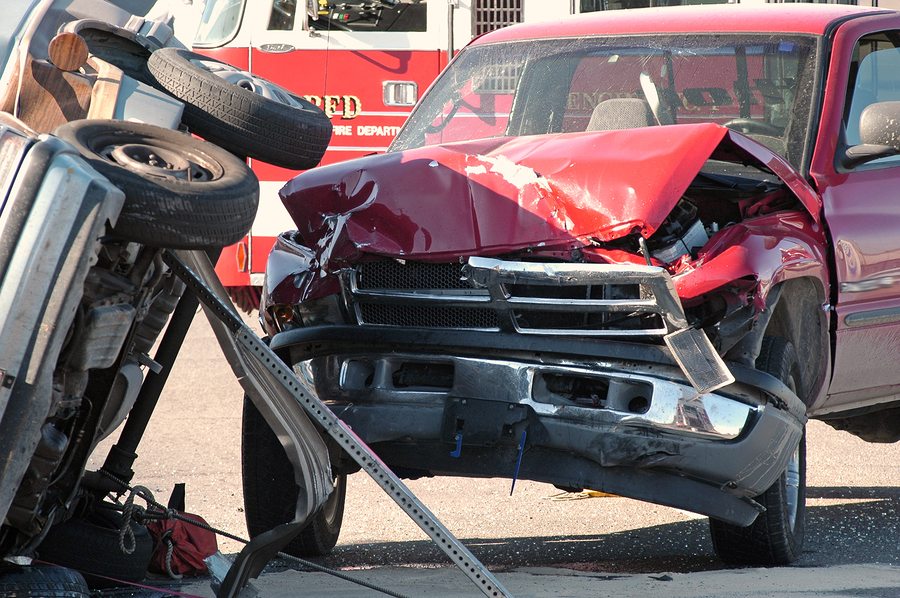New York Rollover Accident Lawyers
Rollover accidents are but one of the many roadway risks and hazards that a driver must contend with in today’s world where everyone is in a rush to be somewhere else. While certain vehicles and driving styles increase the likelihood of a vehicle rollover, it is a risk of being a motorist regardless of whether you drive a car, truck or SUV. Even if you vehicle isn’t the one that rolls over, an out of control vehicle can still strike yours resulting in catastrophic injury or death.
Sullivan & Galleshaw is experienced in handling a broad array of vehicular accidents including vehicle rollovers. If we handle your matter, we approach the litigation aggressively and strategically. While we are certainly open to settlement offers, we will not settle a case unless it is in the best interests of our client to do so. When you work with our attorneys, you can rest assured that your matter will be handled in a trustworthy fashion.
Tripped and Un-tripped rollover accidents
There are two main types of vehicle rollovers that can occur: tripped and un-tripped rollovers. A tripped rollover is one that is caused by the application of an outside force. A typical tripped rollover accident could include a situation where a vehicle skids until its wheels strike the curb causing the vehicle to tip and roll over. The vehicle striking soft ground or another vehicle can also result in a tripped rollover.
In contrast to a tripped rollover where external forces contribute to the vehicle’s rollover, an un-tripped rollover is the product of speed, steering and the coefficient of friction between the vehicle’s tires and the ground. Typically an un-tripped rollover is more likely to occur when cornering or engaging in aggressive driving maneuvers.

Factors That Increase the Likelihood of a Vehicle Rollover
There are numerous factors and circumstances that can increase the likelihood that a vehicle can tip and rollover. Some of the increased risk factors include:
- 15-passenger vans – 15 passenger vans are notorious for their propensity to rollover due to the vehicle height, stiff, high suspensions to support heavy loads, and lack of electronic stability control on older models all contribute to the risk. A two-thirds loaded 15-passenger van is almost three times more likely to rollover than a lightly loaded van.
- Tire pressure – Over inflated tires and increase the vehicle’s center of gravity and reduce the friction between the vehicle tires and the roadway leading to an increased rollover risk.
- Vehicle loading (unbalanced or overloaded) – A vehicle that is overloaded or one that is carrying an unevenly distributed load is more likely to rollover. If cargo shifts due to improper securement procedures, the rollover risk is even greater.
- Aggressive steering or overcorrecting – A driver that engages in overly aggressive steering, cornering, or one that overcorrects can cause a vehicle to tip and roll over. The risk is even more pronounced in vehicles with high centers of gravity like many small SUVs and Jeeps.
- Alcohol – According NHTSA, nearly half of all rollover accidents involve alcohol. Alcohol impairs judgment, slows reaction times, and reduces coordination.
- Speed – There is a correlation between fatalities and speed in rollover accidents. NHTSA statistics show that approximately 40% of rollovers involved speeding excessively.
Unfortunately the foregoing is only representative sample of the types of factors that can make a rollover more likely. In reality, there are many other reasons that rollovers occur or why they are made more likely to occur.
Put Our Vehicle Rollover Experience to Work for You in New York
If you have been injured in a vehicle rollover accident in New York, the attorneys of Sullivan & Galleshaw can fight for you. We work to hold the party responsible for your serious injuries financially accountable. To schedule your free and confidential legal consultation, call 718-843-0300 or contact us online.